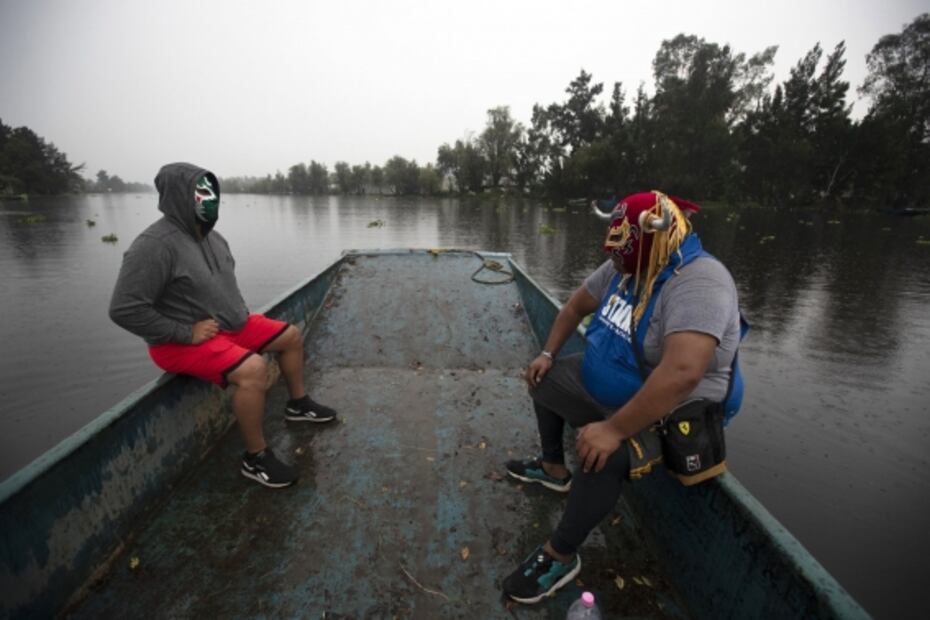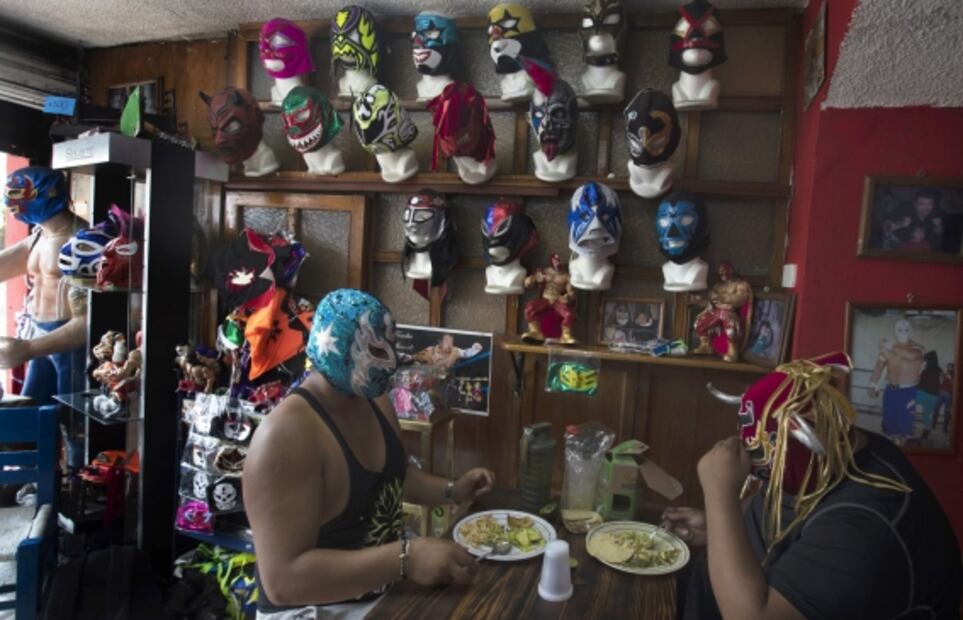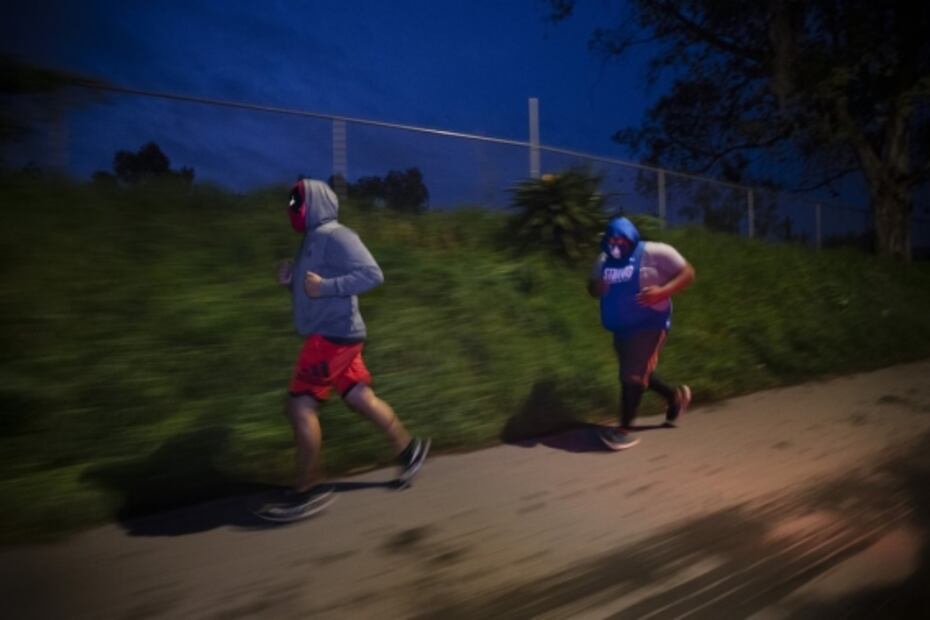Más Información

Luisa María Alcalde, "Andy" López Beltrán y coordinadores de Morena, permanecen cerca de Sheinbaum en el Zócalo

EU declara culpable a empresario mexicano por sobornos a Pemex; pagó más de 150 mil dólares por contratos
Few of Mexico’s cultural traditions have been hit as hard by the coronavirus pandemic as lucha libre wrestling. The death toll among wrestlers has risen dramatically and wrestling arenas are closed, throwing almost everyone out of work.
One enterprising band of aspiring young wrestlers, the three Olivares brothers in Mexico City’s Xochimilco borough, have put up an impromptu ring on one of the district’s famous “floating gardens.”
They plan to offer live-streamed online exhibitions for now — and when restrictions on live sports are lifted, to perform for tourists enjoying the newly reopened canals that run through the floating fields.
They now make their living by selling flowers that they grow on Xochimilco’s artificial islands — known as chinampas — and peddle tacos and tortas elsewhere in the borough.
Recommended:
“We said: ‘Why not? We have the ring , we have the chinampa, we have everything,’” said the oldest brother, 25, who wrestles under the name “Ciclónico.” “So we decided to bring this beautiful sport to this gorgeous landscape.”
With riverboat tours of the floating gardens just reopening — though public lucha libre matches before live audiences are still largely banned — the brothers are betting they can be part of the tourism rebirth.
Other wrestlers have already taken the sport online. Victor Gongora, who wrestles under the name “Herodes Jr.,” has been wrestling in matches live-streamed online for about $12, though people can pay as little as $3 to get tapes of the match after it’s over.
But he acknowledges that it’s not the same without the roaring, swearing crowds that are a key part of the rowdy events.

“It’s part of the culture of Mexico . Lucha libre in Mexico has always been something done in arenas full of people,” said Gongora. “It’s the preferable way.”
But until arenas reopen — Gongora says his first match with fans at 30% capacity will be held next week — bouts that are transmitted online by video streaming are a temporary fix. “It is a way to help out with the expenses, just enough to get by on,” he said.
Many less technologically savvy wrestlers aren’t even that lucky.
“The majority of us come from very poor backgrounds, lower-class families,” said the head of the Mexico City Boxing and Lucha Libre Commission, who wrestles under the name “Fantasma.”
“The savings they (the wrestlers) had are gone, they spent them already,” said Fantasma, who has helped arrange city support payments of about $75 per month for luchadores. “The situation is just critical , very, very bad.”

Gongora said some wrestlers he knows have had to sell gym and wrestling equipment to get through the five months since the arenas shut down .
Fantasma has taken to organizing food donations from local supermarkets for out-of-work wrestlers and has encouraged them to start street stands to get by.
“I tell them, put up a street stand to sell fruit juice, a stand to sell quesadillas. Don’t spend your money, buy supplies” for the stands.
But it is not just the economic woes that are ravaging lucha libre.
There appears to have been a sharp upturn in deaths among wrestlers since the pandemic began in Mexico in March, though how many of those were due to COVID-19 is not certain.
Recommended:
Fantasma says 60 wrestlers, out of a universe of perhaps 2,000 or 3,000, have died so far this year, far more than in a normal year. Asked how many of this year’s deaths were due to COVID-19, he says he’s not sure, adding: “We don’t want to say, out of respect” for the wrestlers’ families. There is a stigma attached to dying of the disease for many in Mexico.
But he reels off a list of those whose deaths are publicly known to be of COVID-19: “Estrella Blanca Jr., Blackman II, Golden Bull, Matematico II.”
Gongora’s own father, the original “Herodes,” died in July at the age of almost 70, though Gongora says: “It was a heart attack, it wasn’t COVID.”
The sport , with its theatrical stunts and tradition of “rudos” — villainous, rule-breaking bad guys — and “técnicos” — the handsome good guys, is clearly struggling to survive.
But few of the schemes contain as much cultural preservation as that of the Olivares brothers in Xochimilco. They are simultaneously defending lucha libre and the vastly older agricultural tradition of the floating gardens, which date back to Aztec times and which are constantly threatened by pollution and encroaching development.

It has been a struggle . Their boat almost sank under the weight of the wrestling ring when they transported it to their chinampa. But they hope to offer packages of chinampa tours and lucha libre matches.
In the meantime, they sell their chinampa-grown flowers at Xochimilco’s traditional market, then prepare tortas and tacos at their food stall and then practice their wrestling at matches that are still largely closed to the public.
They say they do it to honor their late father, who wrestled under the name “Gran Felipe.” His 19-year old son has assumed his name, wrestling as “Gran Felipe Jr.”
“He taught us to love and respect lucha libre , and we do this to honor his name today,” said the son.
mp
Noticias según tus intereses
[Publicidad]
[Publicidad]












